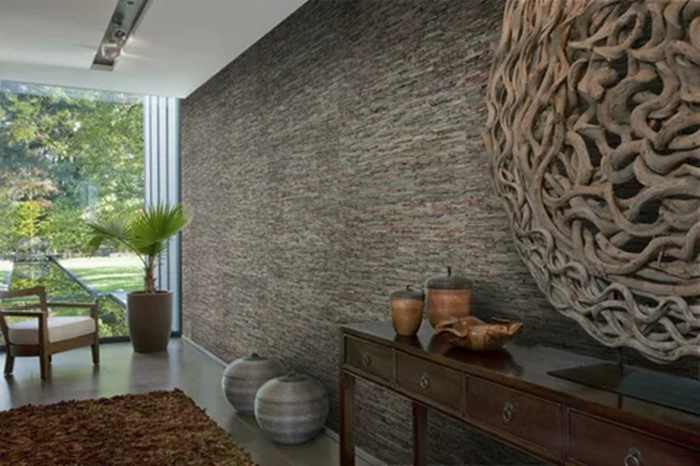Humanity has used natural materials for building houses and interior decoration at all stages of its development. In Ancient Greece, the main building component was stone, in Rus’ – wood, and among the nomadic peoples of Central Asia – animal skins and felt.
This trend is considered one of the most popular and timeless, since wood, stone, metal, glass and textiles are durable and environmentally friendly materials. Almost no interior can do without them, but most often they are found in styles such as English, Scandinavian, Japandi, military, wabi-sabi, chalet, country, contemporary, loft, eco and boho. Depending on the direction, certain materials are used: in the English style, the emphasis is on wood and leather, in the Scandinavian style – on textiles, in the loft style – on brick and metal.
The trend for natural materials in interiors gained particular popularity in the 1920s thanks to organic architecture, a trend that was actively promoted by the American architect Frank Lloyd Wright about 100 years ago. The main philosophy of this trend is that architecture and interior should be one with the environment. It is important that the appearance of buildings corresponds to their purpose and the place where they are located.
Wright’s “prairie houses” – residential buildings that do not contrast with nature, but are in harmony with it – became the prototype of American residential architecture of the last century. The architect has more than four hundred completed projects, including “Fallingwater House”, “Miniature” and the Guggenheim Museum.

